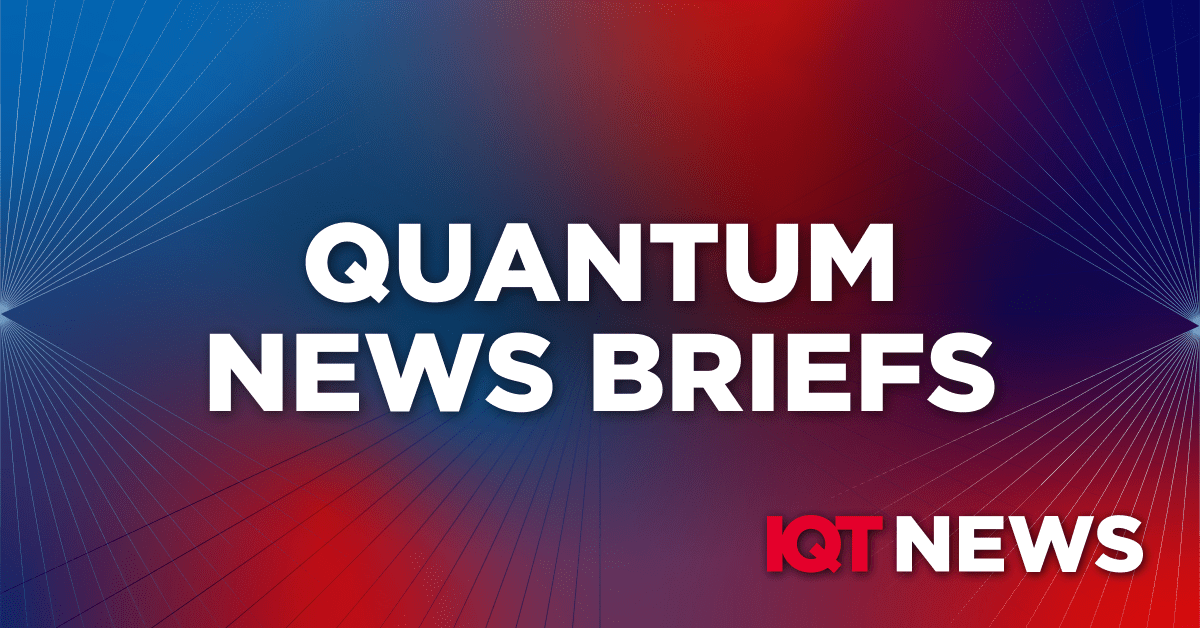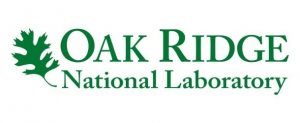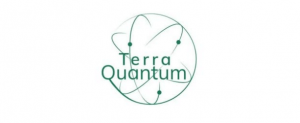Quantum News Briefs August 15: IonQ delivers first overseas Ion Trap to Switzerland • ORNL, UTC to collaborate in quantum information science and engineering • NIST releases FIPS-compliant version of Kyber post-quantum algorithm – now developers need to ready their applications, urges Post-Quantum’s Chairman • Terra Quantum’s TQ42 Library aligns with newly released NIST post-quantum cryptography standards • Safeguarding U.S. secrets from quantum computers just got easier

News Briefs:
IonQ delivers first overseas Ion Trap to Switzerland

IonQ, a leader in the quantum computing industry, has announced the delivery of its innovative ion trap to its European quantum data center in QuantumBasel as per the August 14 release. The delivery marks an important milestone in the manufacturing of the company’s most powerful and scalable system – IonQ Forte Enterprise – which will scale to 35 algorithmic qubits (#AQ) and be capable of considering more than 34 billion different possibilities simultaneously.
European businesses, government agencies, and research institutes will benefit from enterprise-grade direct access to IonQ’s systems when developing novel applications for highly complex problems in fields like AI, finance, and chemistry. IonQ specialists working out of the company’s Basel, Switzerland headquarters will be onsite to receive the trap and continue the build and commissioning of the system.
The partnership between IonQ and QuantumBasel leverages the strengths of both organizations to drive innovation in quantum technology. As part of this collaboration, QuantumBasel will offer uptownBasel – an international center near Basel that houses enterprises, research institutes, startups, and universities – direct access to the #AQ 35 Forte Enterprise system. IonQ will also deliver a future #AQ 64 system through this partnership.
ORNL, UTC to collaborate in quantum information science and engineering
 The University of Tennessee at Chattanooga and the Department of Energy’s (DOE) Oak Ridge National Laboratory (ORNL) are entering into a memorandum of understanding with the intent to collaborate in efforts to research, develop, deploy and evaluate technology and analytically based solutions to challenges in the area of quantum information science and engineering, including networking, sensing, and computing according to August 14 news release.
The University of Tennessee at Chattanooga and the Department of Energy’s (DOE) Oak Ridge National Laboratory (ORNL) are entering into a memorandum of understanding with the intent to collaborate in efforts to research, develop, deploy and evaluate technology and analytically based solutions to challenges in the area of quantum information science and engineering, including networking, sensing, and computing according to August 14 news release.
In 2022, UTC launched an initiative in quantum information science and engineering (QISE) with a goal of establishing a program known for excellence in education, innovation and economic development enabled by quantum technology.
As a result of that initiative, UTC is now establishing a Quantum Center that is part of the University’s Research Institute. The Quantum Center is the focal point for cross-disciplinary teams performing applied research and development (R&D) and delivering an education program of value to students and those already in the workforce
Over the past year, ORNL has been developing a laboratory-wide “quantum roadmap” to articulate goals and a timeline for delivery of a secure and synchronized quantum network of computers and sensors to address emerging needs of the nation’s infrastructure, specifically secure and efficient information exchange.
NIST releases FIPS-compliant version of Kyber post-quantum algorithm – now developers need to ready their applications, urges Post-Quantum’s Chairman
 The National Institute of Standards & Technology (NIST) has now published standards for a long-awaited FIPS-compliant version of the Kyber Post-Quantum Key Exchange algorithm. This marks an important milestone in upgrading the Internet protocols to protect against quantum computer attacks, even though implementing the changes remains complex and calls for extreme caution.
The National Institute of Standards & Technology (NIST) has now published standards for a long-awaited FIPS-compliant version of the Kyber Post-Quantum Key Exchange algorithm. This marks an important milestone in upgrading the Internet protocols to protect against quantum computer attacks, even though implementing the changes remains complex and calls for extreme caution.
Andersen Cheng, Chairman of Post-Quantum explains:“The speed at which NIST has these FIPS-compliant versions is truly commendable and an important milestone. It means we are now moving from maths to engineering and implementation, which is still a complex endeavour, but one where organizations like IETF and the National Cybersecurity Center of Excellence (NCCoE) now play an integral role. We’ve already seen Google and Cloudflare adopt some of the draft proposals, but it will now be down to IETF to include support for the Kyber family in protocols such as Transport Layer Security (TLS) if the whole of the public Internet is to become quantum-safe.”
However, Cheng also advises organizations, particularly those in high-security sectors, not to wait for new protocols to be published. Instead, they should follow Google’s lead, particularly due to the immediate threat of ‘Harvest Now Decrypt Later’ (HNDL) attacks, where encrypted data is stolen now by hostile actors to be decrypted by future quantum computers.
Terra Quantum’s TQ42 Library aligns with newly released NIST post-quantum cryptography standards
 Terra Quantum is proud to announce that its post-quantum cryptography library, TQ42 Cryptography, fully aligns with the NIST PQC standards officially published August 13 as per the August 14 news release. TQ42 Cryptography is the most comprehensive, NIST-aligned open-source PQC library available.
Terra Quantum is proud to announce that its post-quantum cryptography library, TQ42 Cryptography, fully aligns with the NIST PQC standards officially published August 13 as per the August 14 news release. TQ42 Cryptography is the most comprehensive, NIST-aligned open-source PQC library available.
TQ42 Cryptography provides a practical and comprehensive suite of PQC algorithms, which include the security features necessary to meet the NIST PQC standards, such as secure key exchange and robust digital signatures. This ensures it meets today’s standards and is also prepared for tomorrow.
Terra Quantum is committed to creating innovative solutions that comply with rigorous standards and that businesses can confidently implement now. TQ42 Cryptography can be applied by businesses, large or small, and scaled to meet customer needs.
In Other News:
Axios weighs in on NIST PQC standards: Safeguarding U.S. secrets from quantum computers just got easier
NIST formally approved three post-quantum cryptography standards, marking an important first step in protecting government and critical services from encryption-breaking quantum as reported August 13 by Sam Sabin in Axios “What’s Next?”
- IBM researchers developed two of the three standards in collaboration with industry and academic partners.
- The third standard was co-developed by a researcher who has recently joined IBM.
- Apple, Meta, Google and some other companies are already implementing these standards.
Catch up quick: NIST has spent nearly a year collecting feedback on draft standards for post-quantum algorithms and how best to migrate company networks for a quantum-resilient setup.



















